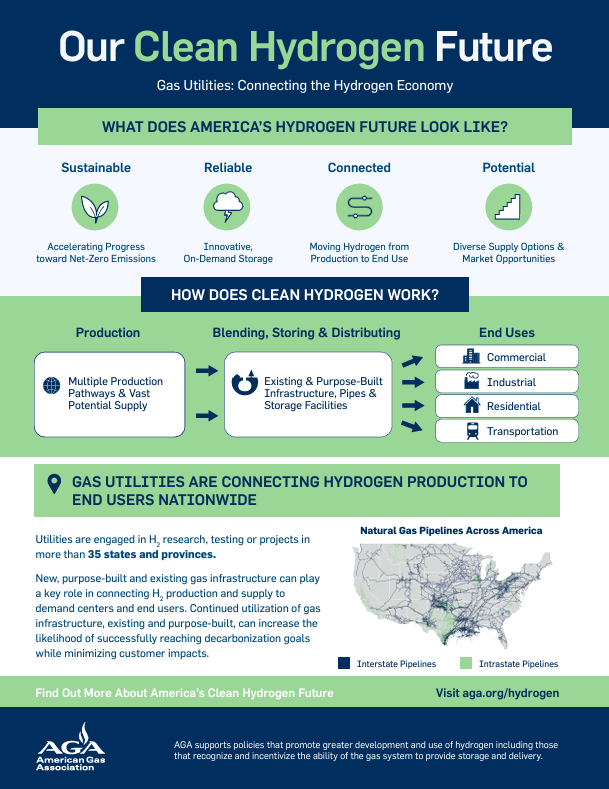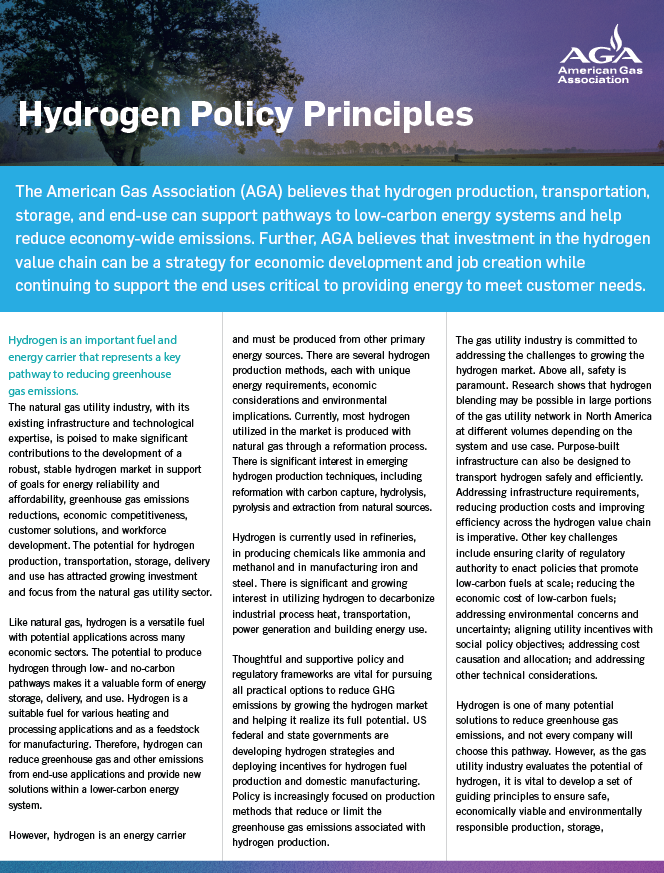Innovation Through Hydrogen
By integrating clean hydrogen into gas systems, we can expand options while accelerating our nation’s ability to reduce emissions.
What Is Hydrogen?
Future technologies that harness low-carbon and zero-carbon energy and carbon capture and storage (CCS) to produce clean hydrogen offer the potential for an inexhaustible supply of low to zero-carbon hydrogen energy.
Hydrogen is the most abundant element in the universe and exists as part of many chemical compounds such as water (H₂0) and natural gas (CH₄). To use hydrogen as a form of energy, it first needs to be produced from other compounds, where it can then be stored in gaseous or liquid form.
Blending Hydrogen With Natural Gas Safely
Natural gas blended with hydrogen has been used safely in various natural gas distribution systems around the world for decades. For example, AGA member company Hawai’i Gas has approximately 1,100 miles of pipeline network serving approximately 70,000 residential and commercial customers. This pipeline network utilizes synthetic natural gas (SNG), renewable natural gas (RNG), liquid natural gas (LNG), and hydrogen. The pipeline network has utilized this blend of gas for years with no reported distribution, internal piping, or appliance issues due to the blend of gas.
Historically, the blend of gas used in the gas distribution system was up to 50% hydrogen. The “town gas” that was used to fuel American homes and businesses had a high hydrogen content and remained in use through the 1970s in some locales.
The United States has the most extensive gas pipeline delivery network in the world, and with continued rigorous research and testing, we can further leverage gas infrastructure to enable clean hydrogen delivery across the entire nation.


